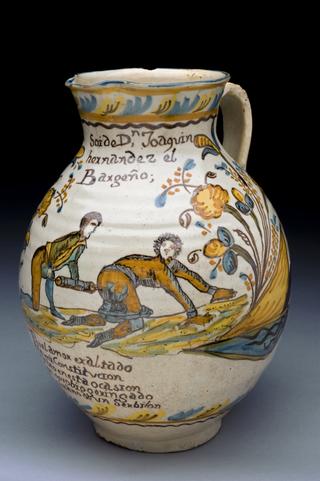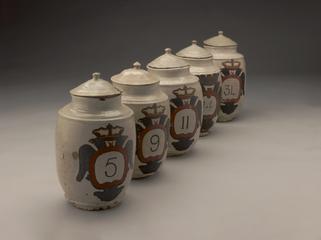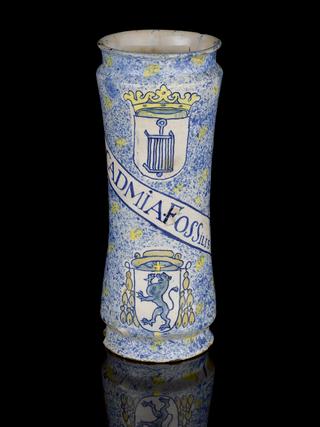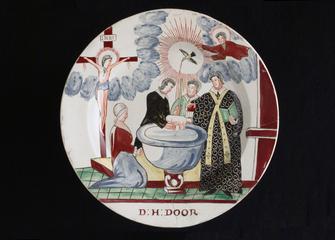


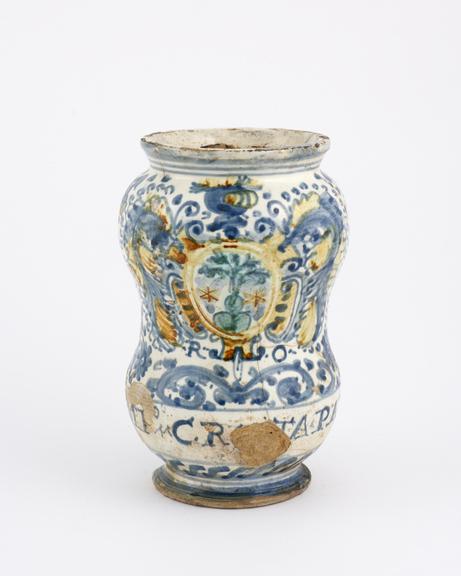

Albarello, South or Central Italy, deeply waisted, decorated with a shield with the initials "R.O.", heavy crude stylized foliage and stripes, labelled EMPO.CR[OS?]TA.PANE ( Bread crust poultice), dated 1662
The inscription on the dumbbell-shaped albarello jar translates from Latin as “Bread Crust Plaster/Poultice”. As the name suggests, bread crusts are the main ingredient. Toasted crusts were soaked in vinegar for half an hour then added to mint, sandalwood, mastic and red coral with oil and barley and made into a soft pliable mass.
The poultice was applied hot to the body and was thought to calm vomiting within half an hour and help keep food down. Today poultices, although not made of bread crusts, are used for pain relief, improving the circulation and to counter inflammation. The earthenware jar is decorated with foliage and an unidentified mark, probably from a monastery.
Details
- Category:
- Medical Ceramic-ware
- Object Number:
- 1986-434
- Materials:
- ceramic
- Measurements:
-
overall: 156 mm 100 mm, .38kg
- type:
- drug jar
- credit:
- Sotheby's (New Bond St)
